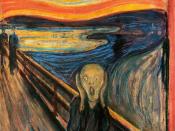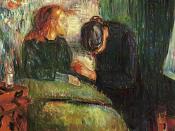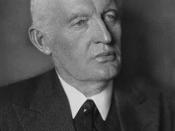Edvard Munch
1863 - 1944
Edvard Munch was a Norwegian artist whose brooding and anguished paintings and graphic works, based on personal grief and obsessions, were instrumental in the development of expressionism.
Edvard Munch grew up in Norway's capital, Oslo, then called Christiania. His father, Christian Munch -- brother of the well-known historian P.A. Munch -- was a deeply religious military doctor earning a modest income. His wife, who was 20 years his junior, died of tuberculosis when Edvard was only five years old, and Edvard's older sister, Sophie, died of the disease at the age of 15. Edvard himself was often ill. A younger sister was diagnosed with mental illness at an early age. Of the five siblings only one, Andreas, ever married, only to die a few months after the wedding.
His childhood home was culturally stimulating, but in his art Munch turned again and again to the memory of illness, death and grief.
Munch began painting at the age of 17 in Christianity (now Oslo). A state grant, awarded in 1885, enabled him to study briefly in Paris. For 20 years thereafter Munch worked chiefly in Paris and Berlin. At first influenced by impressionism and postimpressionism, he then turned to a highly personal style and content, increasingly concerned with images of illness and death. In 1892, in Berlin, an exhibition of his paintings so shocked the authorities that the show was closed. Undeterred, Munch and his sympathizers worked throughout the 1890s toward the development of German expressionist art. Perhaps the best known of all Munch's work is The Scream (1893, Nasjonalgalleriet, Oslo). This, and the harrowing The Sick Child (1881-86, Nasjonalgalleriet), reflect Munch's childhood trauma, Melancholy suffuses paintings such as The Bridge --in limp figures with featureless or hidden faces, over which loom the threatening shapes...


